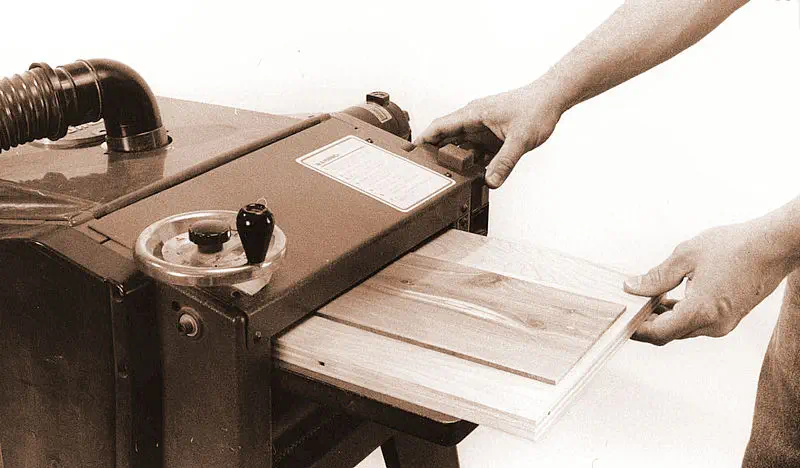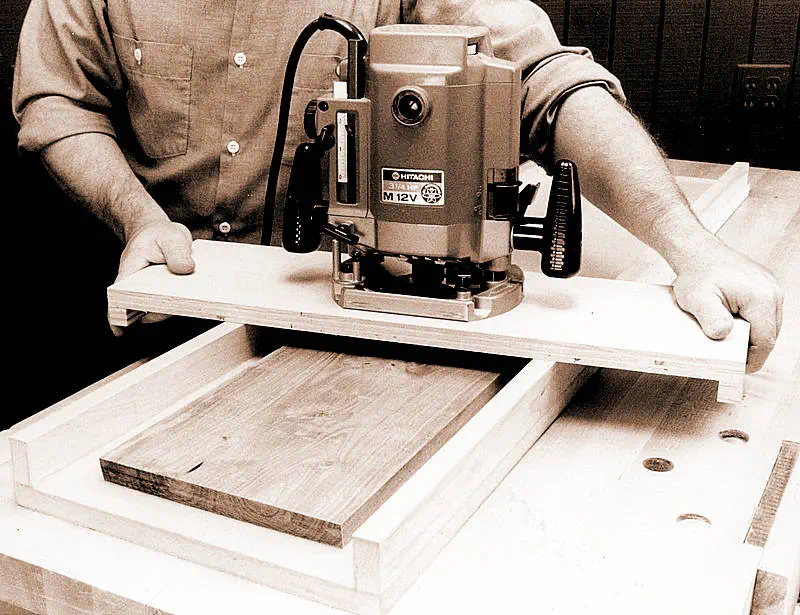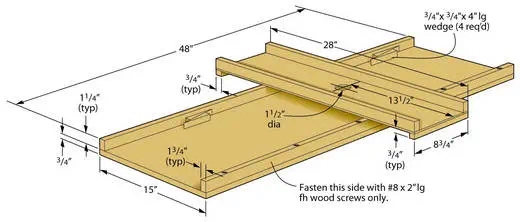CHECK THE SETUP
After changing or sharpening the knives in your planer, make a test cut. Using calipers, check the thickness of the board across the width. If the thickness isn’t precisely the same at both edges, the knives are not parallel to the table. If the planer cuts a deep snipe at the beginning or end of a board, either the bed rollers aren’t properly set or the feed roller pressure is not adjusted correctly.
CHECK THE STOCK
If necessary, clean the wood; avoid plywood and used wood. Set the feed rate and the depth of cut according to the wood species. The harder the wood, the slower the feed rate and the shallower the cut should be. The width of the stock should also affect your settings — use a slower feed and shallower cut for wide stock.
Inspect the lumber to find the grain direction and slope. As in jointing, the grain slope is important in planing. Once again you want the cutterhead to cut with the wood grain, shaving the slope downhill. You can usually find the slope simply by looking at the edge of the board. When working with rough-sawn or S2S lumber, give the edge a few licks with a hand plane to reveal the wood grain.
If it's hard to read the grain on the edge and you're surfacing plain-sawn stock, consult the "arrows" on the face of the board. Arrows form when the sawyer slices through the annual rings at an angle to the grain. If you're looking at the exterior or "bark" side of the board, these arrows point uphill. On the interior or "heart" side, they point downhill. Knowing this – and which way your cutterhead spins – you can determine how to feed the board into the planer. So I don't have to think this through every time I plane, I use this mnemonic: Bark side up, arrows advance; bark side down, arrows retreat.
PLANING WITH THE GRAIN
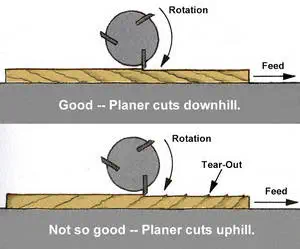
1 To avoid tearing and chipping, the knives must cut "downhill" on the grain slope.
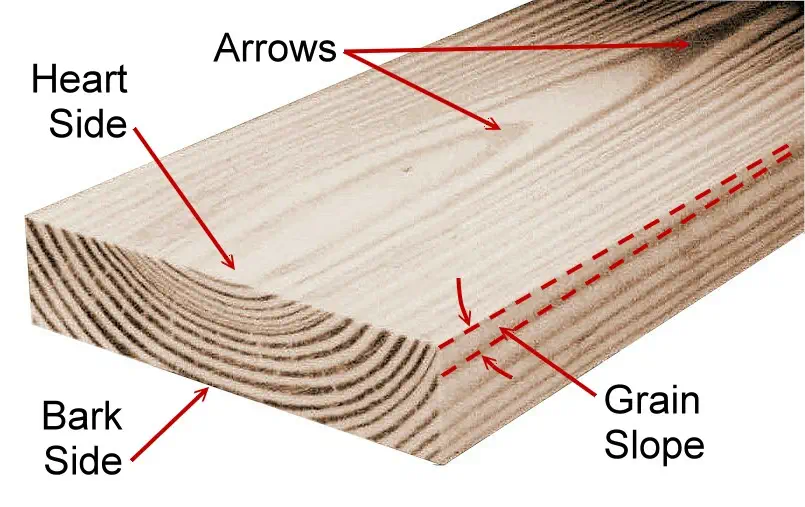
2 To determine how to feed plain-sawn stock through a planer, note which way the “arrows” point. Then inspect the end grain to find the "bark side" of the board — the side nearest the bark when the tree was standing.*
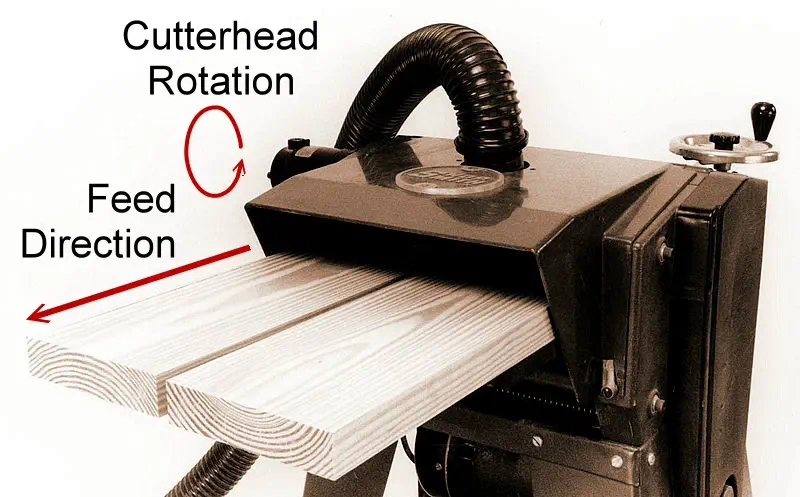
3 If the bark side is up, feed the wood in the same direction that the arrows point. If it’s down, feed it in the opposite direction.*


